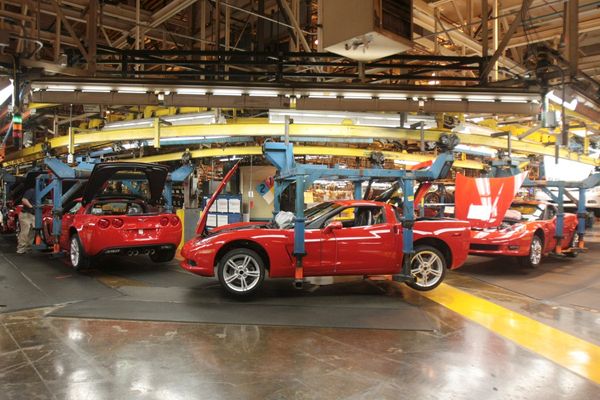
The term “electrified vehicles” includes various propulsion systems, including hybrids, hydrogen fuel cell vehicles, plug-in hybrids (PHEVs), and EVs. While PHEVs haven’t been as popular as others in the category, they’re having a moment as more buyers look to transition from gas-only vehicles to models with better fuel economy. They function similarly to hybrid vehicles but have some elements of battery-only EVs, which can confuse some buyers. Let’s take a closer look at what PHEVs are and how they work.
What Are PHEVs?
Plug-in hybrid vehicles, or PHEVs, typically have a gas engine and one or more electric motors with a battery pack that needs charging. They offer a modest all-electric range, which means no fuel-ups for many drivers. When the battery’s power is mostly exhausted, they function more like traditional hybrids, relying mainly on the gas engine with occasional help from the electric motor(s). PHEVs are more expensive than hybrid vehicles but less so than full EVs and must be charged to realize their full fuel-saving potential.
Charging takes less time than with EVs because PHEVs’ batteries are smaller, which also equates to a shorter electric range. Most models offer between 20 and 40 miles of range, though some go much lower or a bit higher. Those numbers pale in comparison to most EVs, but plug-in hybrids have an advantage with their gas engines that step in to offer more livable driving range numbers.
Benefits Of PHEVs
Plug-in hybrids’ electric-only range can be a significant benefit for drivers with short commutes. It can mean driving for extended periods with stops only for charging instead of visiting a gas station. Charging is possible on a 240-volt home outlet in a few hours or a 120-volt outlet overnight. They generally cost less than EVs and can work well for people living in areas with less developed charging infrastructure because of the gas engine backup.
Many automakers have learned that drivers want to engage with their electrified vehicles, and some new PHEVs lean on their electric motors for more lively off-the-line acceleration. They are often less noisy than their gas counterparts, but they do need to rely on the gas engine when more power is needed or in extreme temperatures.
PHEVs can also qualify for federal tax credits of up to $7,500, which can significantly reduce the initial purchase price. Combined with fuel savings for shorter drives, a plug-in hybrid can be a compelling buy for many drivers. And, while they require charging, plug-in hybrids can be an excellent “bridge” vehicle for buyers looking to explore EVs by instilling good battery hygiene habits and familiarizing them with the charging lifestyle.
Downsides Of PHEVs
Though they offer an electric range, which can significantly improve fuel economy, PHEVs aren’t the best choice for every driver. They’re more expensive than gas and hybrid vehicles, and the payback period to recover that extra cost in fuel savings can be longer than most people keep vehicles. That’s especially true for drivers with long commutes or people who take frequent road trips.
Owners who don’t remember to charge can get worse fuel economy, as the gas engine has to tote around a heavy battery and electric motors. Hybrids generally do not produce their best gas mileage on the highway, and the extra weight in PHEVs makes long-distance driving even less efficient. The additional space needed for a battery pack can also cut into interior space as automakers often install the packs under the rear seat or trunk area.
PHEVs also have all the maintenance costs of a standard gas model with the added potential of battery replacements. However, the long 100,000-mile warranties usually take care of any electric drive system problems. Unlike EVs, PHEVs still require oil changes, engine air filters, and other wear-and-tear components that drive up ownership costs.
Finally, plug-in hybrids may lose relevance as EVs become more affordable and battery technologies mature. Solid-state batteries and alternative chemistries will bring better range estimates and less weight, improving the driving experience and making them more usable for people who do not live in areas with well-equipped charging facilities.
Future Of Plug-In Hybrids
No matter what you hear, PHEVs are not the end-all, be-all solution and are not completely irrelevant. That in-between status puts them in somewhat of an awkward position, as EVs are better solutions for many buyers, and gas or hybrid vehicles make more financial sense for others. PHEVs have doubled in sales since 2019, and forecasts predict continued growth through the end of the decade. They’ve also gotten a boost as automakers see slower-than-expected EV demand growth and revert to hybrid technologies.
Despite a higher initial purchase price than gas or hybrid vehicles, PHEVs’ electric range will continue to offer significant benefits for people living in states with higher-than-average gas prices. The U.S. has less aggressive electrification goals than many other countries, but continued tax credits sweeten the deal and make their purchase price more palatable for more buyers.
That said, the United States government has invested billions into improving the charging infrastructure and making the EV ownership experience less of a hassle. That will eventually alleviate charging concerns for many people, though charging speeds may remain a challenge for some time.







